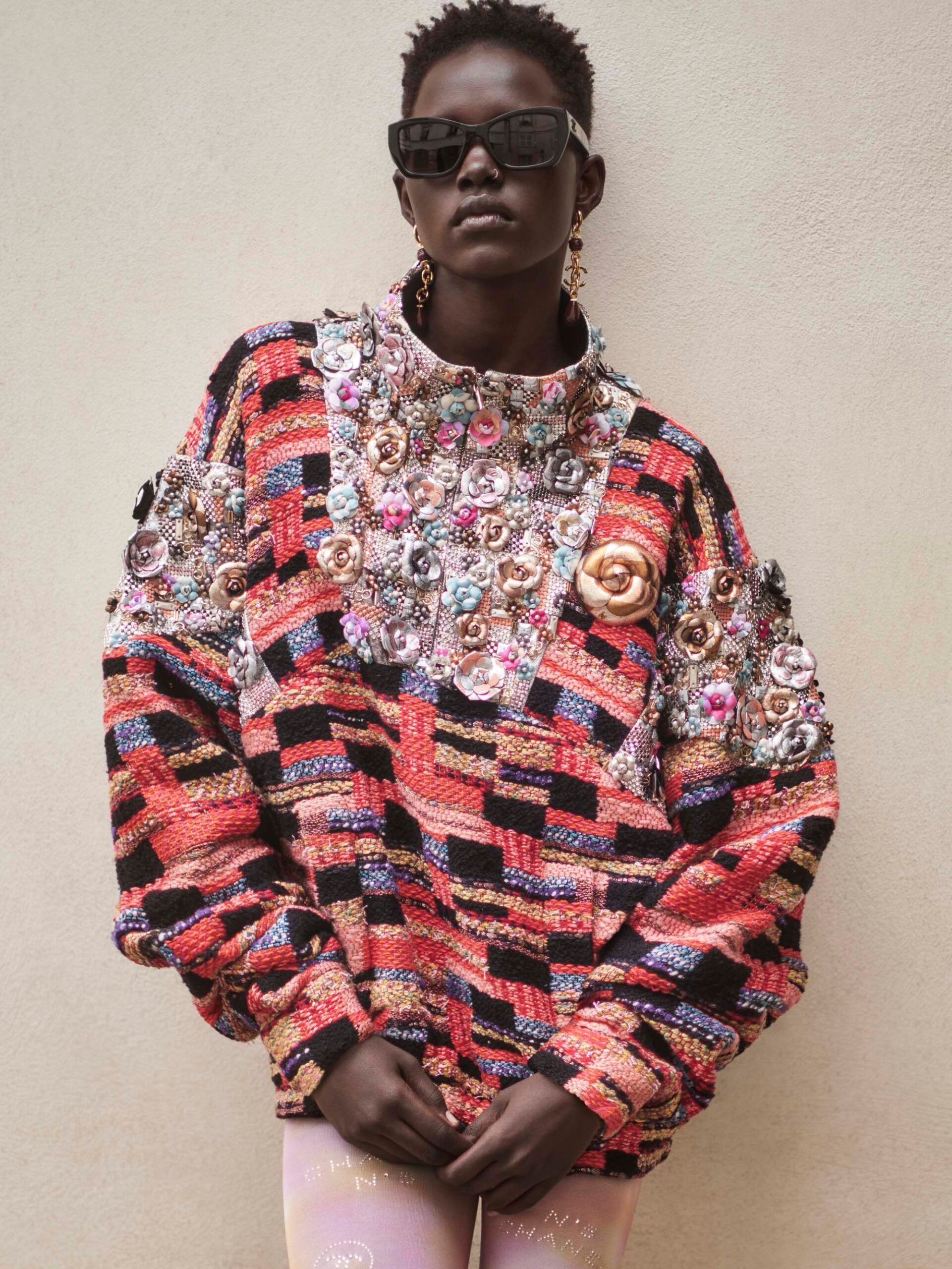Why is the world’s new “fashion capital” in Africa
We often think of Africa as a hot and arid continent. However, this land is on the brink of becoming the new focal point for global fashion. Let’s unravel this curious phenomenon.
In late October 2023, UNESCO announced that Africa is emerging as a new leader in the global fashion scene. The African fashion industry is rapidly growing, showing potential to meet the demands of the international market. Simultaneously, African nations are calling for investment to enhance the continent’s fashion scene and increase its influence worldwide.

Source: Yoair Blog
For most people, the fashion capitals are Paris, Milan, and New York. But did you know that last year, Chanel brought its Métiers D’art show to Dakar, the capital of Senegal in West Africa? Dior collaborated with numerous artisans to create the Cruise 2020 collection. These moves indicate that there’s something truly fascinating happening on this continent.
This article will take you through five distinctive features of African fashion. From now on, your creative inspiration and wardrobe choices might extend to a land with a rich history and profound cultural values.
1. Wild Spirit: The “Runway” in the Wilderness
With its characteristic tropical climate, clothing in Africa needs to ensure maximum breathability. The first recorded garments were made from tree bark, animal fur, or hides. Men would simply drape a piece of fabric over their waists or wear a loincloth, while women would wrap fabric around their waists and chests.
In some traditions, unmarried women would leave their chests bare, and it was only after marriage that they would wear more modestly wrapped garments. This free-spirited, wild nature, which persists to this day, imbues African fashion with a distinct and powerful energy.
Exploring the fashion runways of African brands, you’ll encounter countless designs infused with natural elements and unique cuts. It could be a side-slit top, a creatively styled wrap, oversized multicolored dresses, or crop-tops intricately woven from natural fibers. Amidst the refined spirit of French elegance and the familiarity of Italian art on the runways, the untamed essence truly stands out.
The liberating and wild aspects of African fashion became the inspiration for Yves Saint Laurent’s Spring-Summer 1967 collection. He crafted dresses using materials such as wood beads, palm fiber, straw, and golden thread. The centerpiece of the collection was a dress designed to pay homage to the sculptural works created by the Bambara community in Mali, showcasing the raw and authentic beauty of African influences.
2. Traditional Craftsmanship: Our Hands Shape It All
Craftsmanship in Africa is a fusion of inspiration from various forms of art. It encompasses costume design, jewelry craftsmanship, sculpture, architecture, fiber art, and even dance. When it comes to African textile crafts, one cannot ignore the art of strip weaving. Narrow and long fabric strips are woven, joined, and sewn together to create larger, beautifully patterned fabric pieces.
You’ll find these woven strips in the textile heritage of West Africa, such as Kente cloth, Bokolanfini mud cloth, and Aso Òkè fabric. Additionally, African artisans excel in creating fashion pieces through techniques like beadwork, leather crafting, embellishments, hand embroidery, Kente weaving (a 400-year-old technique of weaving fabric from cotton and silk), and more.

The art of hand embroidery in Africa | Source: Tambani
Fabric dyeing is another renowned traditional craft in Africa. One of the oldest and most famous dyeing methods is tie-dyeing, known as adire in Yoruba culture. This dye is still widely used as a source of pride and a connection to nature, despite the proliferation of chemical dyes. Different regions have their distinct traditions of tie-dyeing, such as the Yoruba people in Southern Nigeria, who often wear tie-dyed garments while dancing at traditional festivals.
3. Bold & Festive Prints: The Joyful Patterns
Color and patterns, including printed and dyed fabrics, woven strips, and beaded embellishments, allow different ethnic groups to distinguish themselves. Each tribe has its unique clothing processing techniques passed down from generation to generation over centuries. As a result, African garments burst with vibrant, eye-catching colors, accentuating the distinctive skin tones.
The most common fabric in African fashion is made from Ankara fabric. Ankara is a wax-printed fabric with various colors, patterns, and styles, suitable for creating a variety of clothing items such as dresses, skirts, shirts, pants, and even accessories like bags and earrings.

Patterns with bright colors, bringing the breath of lively festivals | Source: Kohler
Ankara has become a trend in recent years, even outside Africa, thanks to its bright colors and diverse patterns, contributing to showcasing the rich cultural heritage of the people here. Patterns can be broadly categorized into two main groups: geometric (diamonds, triangles, zigzags, circles, etc.) and symbolic (elements from nature stylized as leaves, seeds, fruits, animals, etc.).
These patterns carry values deeply rooted in the cultural and spiritual heritage, passed down from ancestors to create fashion products rich in artistic expression, standards, authenticity, tradition, and the pride of the nation.
4. Cultural Blending: Uniqueness Through Cultural Crossroads
The fashion landscape of Africa has a rich and diverse history shaped by various cultures and traditions. During the colonial period, the influence of this era is evident in the adoption of robes and tunics from the Middle East, known as “boubou.”
Many Western-style dresses and gowns have also found their way into Africa but are still tailored using African traditional materials and techniques. This further adds a global appeal to African fashion while maintaining a strong local flavor.

An African inspired design in the Chanel Metier d’art 2023 collection | Source: Elle
From everyday attire to high fashion, the intersection of traditional culture and modern styles brings boundless creativity and the ability to express oneself fiercely to African fashion. It can be said that African fashion brings people closer to nature, demonstrating that maximalism can coexist with elegance and sophistication.
The blending of cultures has trailblazers as well. Renowned Nigerian fashion designer Lisa Folawiyo has taken African fashion to the global stage with collections showcased in Lagos, Milan, New York, and Paris. Folawiyo is known for handcrafted embellishments and the use of local Ankara fabric to build her brand. Similarly, Dent de Man, a men’s clothing brand, incorporates classic styles with unique slit cuts.
This cultural fusion not only celebrates diversity but also showcases the dynamism and adaptability of African fashion, making it a global trendsetter.
5. Sustainable Practices: Breaking Away from the “Fashion Factory” Past
The textile and garment industry is now the second most important sector in the African market, following agriculture. However, the environmental, economic, and social challenges posed by the excessive use of fast fashion items, which African countries import, are substantial. Numerous reports have highlighted cases of fashion waste causing pollution in African rivers to the extent that in some areas, water becomes as alkaline as detergent.

Recognizing the serious consequences, Africa has shifted towards using more local materials, innovating sustainable textile production, and raising awareness about sustainable consumption models. The production of organic cotton in Africa increased by 90% during the 2019-2020 period, now accounting for 7.3% of global production.
The new generation of emerging designers is making waves in the international market by harmonizing market clothing demands with heritage and sustainability. Many brands have started producing clothing using traditional methods such as hand weaving and dyeing. This promotes environmentally friendly production methods and collaboratively supports local communities.

